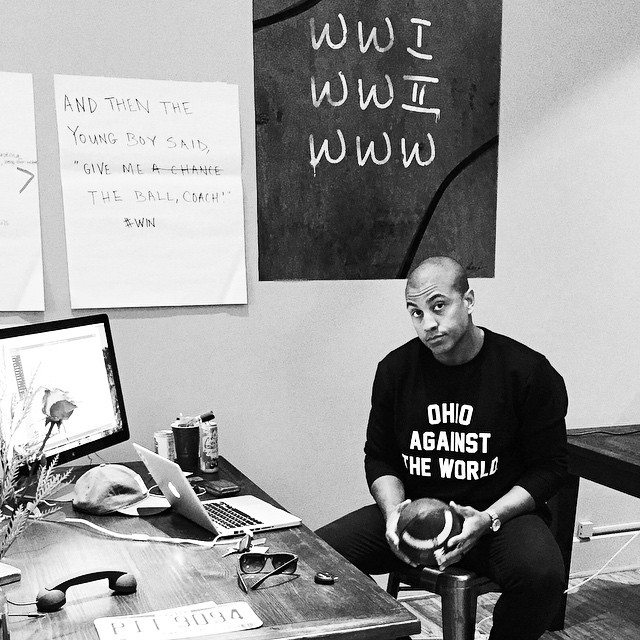Editor’s note: Web Smith is co-founder and CEO of Whence, a local commerce engine focused on connecting local, independent businesses to the city’s citizens who want to support local.
Historically, a concentration of the country’s startups with the most upside move to the Valley, Boston, New York and Austin for what the geography can do for them. This isn’t news. In fact, I was one of them.
Austin, Texas, was great to me and my first startup. I still remember receiving my first seed capital from a Dell executive for 15 percent of my company. Even for recession-stricken 2009, the transaction was casual, as though it happened all the time in neighborhood coffee shops. We didn’t even have an office or a business plan. This is one of the positives of living in a startup city like Austin. Or even better — New York or the Valley.
But there is a unique brand of loyalty in the state of Ohio. And I can honestly say that I have never lived in a better place for building the type of company that fuels America’s middle market economy than Ohio’s capital city.
I’d Rather Build in Columbus
It is a fact that funding exchanges happen less frequently in Columbus when compared to other Midwestern cities like Pittsburgh and Chicago. This can be discovered with a simple search on CrunchBase. Where we live, startups have to prove themselves. Rarely is benefit of the doubt given. This is actually one of the positives of living in a startup city like Columbus.
Often enough, perceived negatives can account for positive outcomes. And in the case of how Columbus operates, it could become a model for how startups should be tasked with proving a higher likelihood of a positive outcome before landing a Series A or even seed funding.
In Columbus, the goal may be different than achieving billion-dollar valuations. Here, we measure economic impact by jobs added and infrastructure strengthened.

Web Smith
If you have the privilege of launching a startup in places like Columbus or Cincinnati, you aren’t necessarily building for what the city can do for you. Rather, you build for what you can do for the city. I’d venture so far as to say that there is a desire to do well for the city, not just in the city. There are certain disadvantages to launching a startup outside Chicago, Austin, Boston, LA, Palo Alto, San Francisco, or New York, but choosing an emerging city also comes with its own set of advantages.
According to CrunchBase, tech startups in or associated with Columbus (50 percent of founders/50 percent of employees within the city) have raised 21 Series A rounds valued at $1 million or above since 2014.
Most recently, city icon Tanisha Robinson raised $4.25 million led by investors in Chicago, Las Vegas and Tech Columbus. Her success makes 22 Series A rounds since January 2000. To compare, Pittsburgh is the home of 35 Series A rounds since January 2014.
In short, venture-fueled growth is rare in Columbus. Yet, businesses still thrive by employing a wildly innovative strategy: selling things and making more money than they spend.
While the above statistics indicate an alarming statistical disparity for those who believe that money should come easier, it certainly makes Ohio tech entrepreneurs work harder to gain traction and sustainability. I tend to believe that a special brand of innovation occurs in those circumstances. Yes, this means fewer big wins but it also means fewer nonchalant, multi-million dollar startup fizzles.
While luminaries like Fred Wilson, Marc Andreessen and Bill Gurley blog, speak, and tweetstorm about the burn rates of well-funded startups, there is a scrappiness and resourcefulness that is inherent to the Midwest. This has led to an upward trend in entrepreneurially minded technical and creative freelancers, fueling further possibility within the capital city and Cincinnati. I’d argue that it is not only working for area startups; Columbus’ scrappiness is fueling job creation and reinvigoration.
You see it in local startups and innovation havens like Tixers, CoverMyMeds, Mission Coffee, The Salt Mines, Seen Moment, and Print Syndicate. Columbus and Cincinnati also have well-established, mid-market businesses like Homage, Uncrate and Rogue, which have proven themselves by legitimate, lasting traction. You could say that startups like Palo Alto’s Bevel and San Francisco’s Chubbies would fit well in Ohio. Generating revenue on day one isn’t a foreign thought in Columbus, it’s a necessity.
Columbus is not just a university and a corn field. According to Forbes, “Modern Columbus has emerged as a technologically sophisticated city.” As the city continues to achieve critical mass, you may see it emerge as a model for how institutional capital is allocated among young, viable startups and a template for how startups grow lean and efficiently.
Meanwhile, startups here will continue to build as though the only way to win is by doing it the scrappy, Midwestern way.
